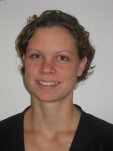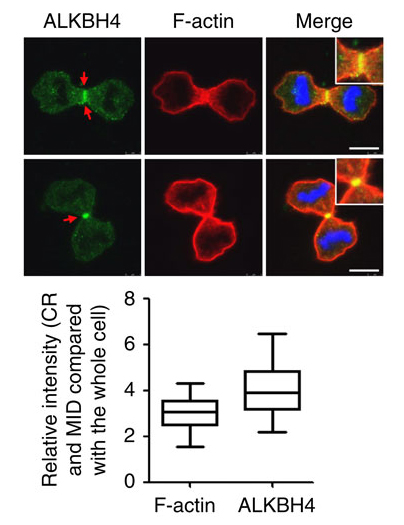A newly identified protein regulates cell division

Anja Nilsen (photo) from Arne Klungland's group at the Department of Microbiology, Oslo University Hospital, is shared first-author on a collaborative work entitled "ALKBH4-dependent demethylation of actin regulates actomyosin dynamics", recently published in Nature communications.
Mammals have nine homologues of the Escherichia coli AlkB repair protein: ALKBH1-8, and the fat mass and obesity associated protein FTO. These proteins have been relatively difficult to analyze and the activity of some remains elusive. It has been shown that some homolog’s associate with disease conditions including obesity, cancer and infertility. ALKBH4, which is described in this study, is the only AlkB homolog absolutely required for life and cell division. In this collaborative study, Anja Nilsen, Markus Fusser and colleagues from the University of Beijing and Chicago identifies a novel methylation on Actin, K84me1, which requires Alkbh4 for dynamic demethylation. Lack of ALKBH4 causes disorganization of the cleavage furrow and multinucleation.
 |
| Graphical abstract from the paper; Endogenous ALKBH4 immunostaining in MRC5 cells with anti-ALKBH4 and F-actin staining with phalloidin. DNA was visualized by DAPI. Quantification of signal intensity (accumulation of protein) on the contractile ring (CR) and midbody (MID) relative to the whole cell (lower panel). (50 cells per condition per experiment). In box-and-whisker plot plotted by Prism5 software, median means 50% of cells is greater than this value, upper quartile or lower quartile means 25% cells is greater or less than this value and maximum or minimum means greatest or least value. |
Links:
ALKBH4-dependent demethylation of actin regulates actomyosin dynamics.
Li MM, Nilsen A, Shi Y, Fusser M, Ding YH, Fu Y, Liu B, Niu Y, Wu YS, Huang CM, Olofsson M, Jin KX, Lv Y, Xu XZ, He C, Dong MQ, Rendtlew Danielsen JM, Klungland A, Yang YG.
Nat Commun. 2013;4:1832.
Arne Klungland's group - Laboratory for Genome repair and regulation
